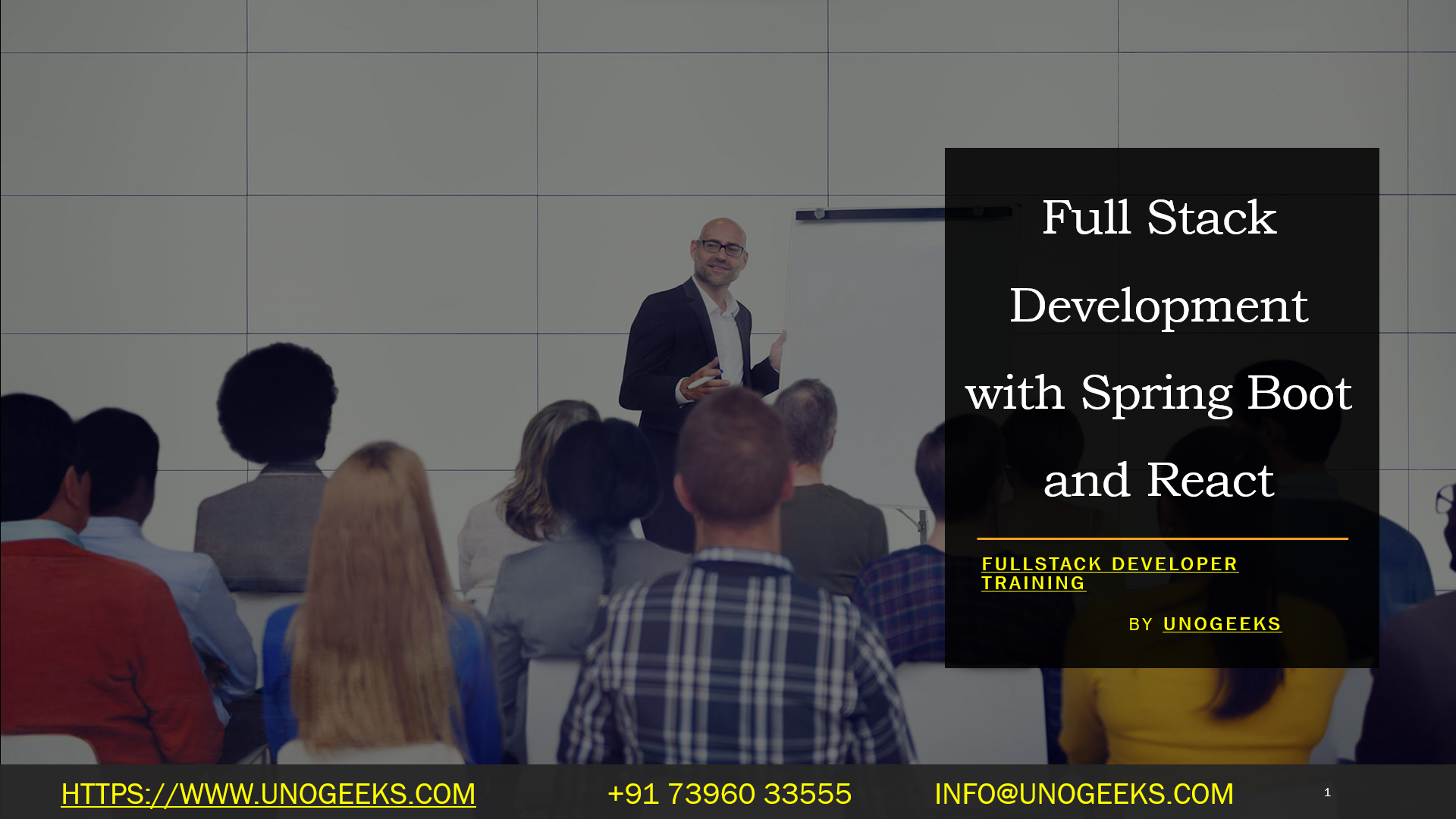Full Stack Development with Spring Boot and React
Full Stack Development with Spring Boot and React
Full Stack Development with Spring Boot and React is a popular combination for building modern web applications. It combines the Spring Boot framework for the back-end (server-side) development with the React library for the front-end (client-side) development. This stack offers a powerful and efficient way to create full-featured web applications. Here’s an overview of how to get started with Full Stack Development using Spring Boot and React:
Back-End Development with Spring Boot:
- Setup and Configuration:
- Start by setting up your development environment with Java and a Java IDE (e.g., IntelliJ IDEA, Eclipse).
- Spring Boot Project Creation:
- Create a new Spring Boot project using Spring Initializr or your IDE’s project creation wizard. Include dependencies like Spring Web, Spring Data JPA (for database access), and any other dependencies you need.
- Database Configuration:
- Configure your database connection in the application.properties or application.yml file.
- Creating RESTful APIs:
- Develop RESTful APIs using Spring Boot’s @RestController and @RequestMapping annotations.
- Implement services and repositories to handle data retrieval and manipulation.
- Security (Optional):
- Implement security features like authentication and authorization using Spring Security.
- Testing:
- Write unit tests for your Spring Boot components using testing frameworks like JUnit and Mockito.
- Build and Deployment:
- Build your Spring Boot application into a JAR or WAR file.
- Deploy the application to a web server or cloud platform of your choice (e.g., AWS, Heroku, or Azure).
Front-End Development with React:
- Create React App:
- Use Create React App or a similar tool to set up a new React project. This tool helps you create a structured React application with minimal configuration.
- Component Development:
- Develop reusable React components for your user interface. Use JSX to define the structure and behavior of your components.
- State Management:
- Manage application state using React’s built-in state management or consider using state management libraries like Redux or React Context API.
- Routing:
- Implement client-side routing using React Router for navigation between different views or pages.
- API Integration:
- Make API requests to your Spring Boot back-end using JavaScript’s Fetch API or a library like Axios.
- Styling:
- Style your React components using CSS, SASS, or CSS-in-JS libraries like styled-components.
- Testing:
- Write unit tests for your React components using testing libraries like Jest and React Testing Library.
- Build and Deployment:
- Build your React application for production using the npm run build command.
- Deploy the production build to a web server or hosting platform.
Integration:
- Connecting Front-End and Back-End:
- Configure your React application to make HTTP requests to the Spring Boot APIs.
- Cross-Origin Resource Sharing (CORS):
- Configure CORS settings on the Spring Boot server to allow requests from your React application’s domain.
- Authentication (Optional):
- Implement user authentication and token-based security if required.
Testing and Optimization:
- Testing:
- Test the integrated application end-to-end to ensure all components work together correctly.
- Performance Optimization:
- Optimize the application for performance by minimizing HTTP requests, using code splitting, and lazy loading.
- Monitoring and Debugging:
- Implement monitoring and error tracking to identify and address issues in production.
Full Stack Developer Training Demo Day 1 Video:
Conclusion:
Unogeeks is the No.1 IT Training Institute for Full Stack Developer Training. Anyone Disagree? Please drop in a comment
You can check out our other latest blogs on Full Stack Developer Training here – Full Stack Developer Blogs
Please check out our Best In Class Full Stack Developer Training Details here – Full Stack Developer Training

———————————-
For Training inquiries:
Call/Whatsapp: +91 73960 33555
Mail us at: info@unogeeks.com
Our Website ➜ https://unogeeks.com
Follow us:
Instagram: https://www.instagram.com/unogeeks
Facebook:https://www.facebook.com/UnogeeksSoftwareTrainingInstitute
Twitter: https://twitter.com/unogeeks
